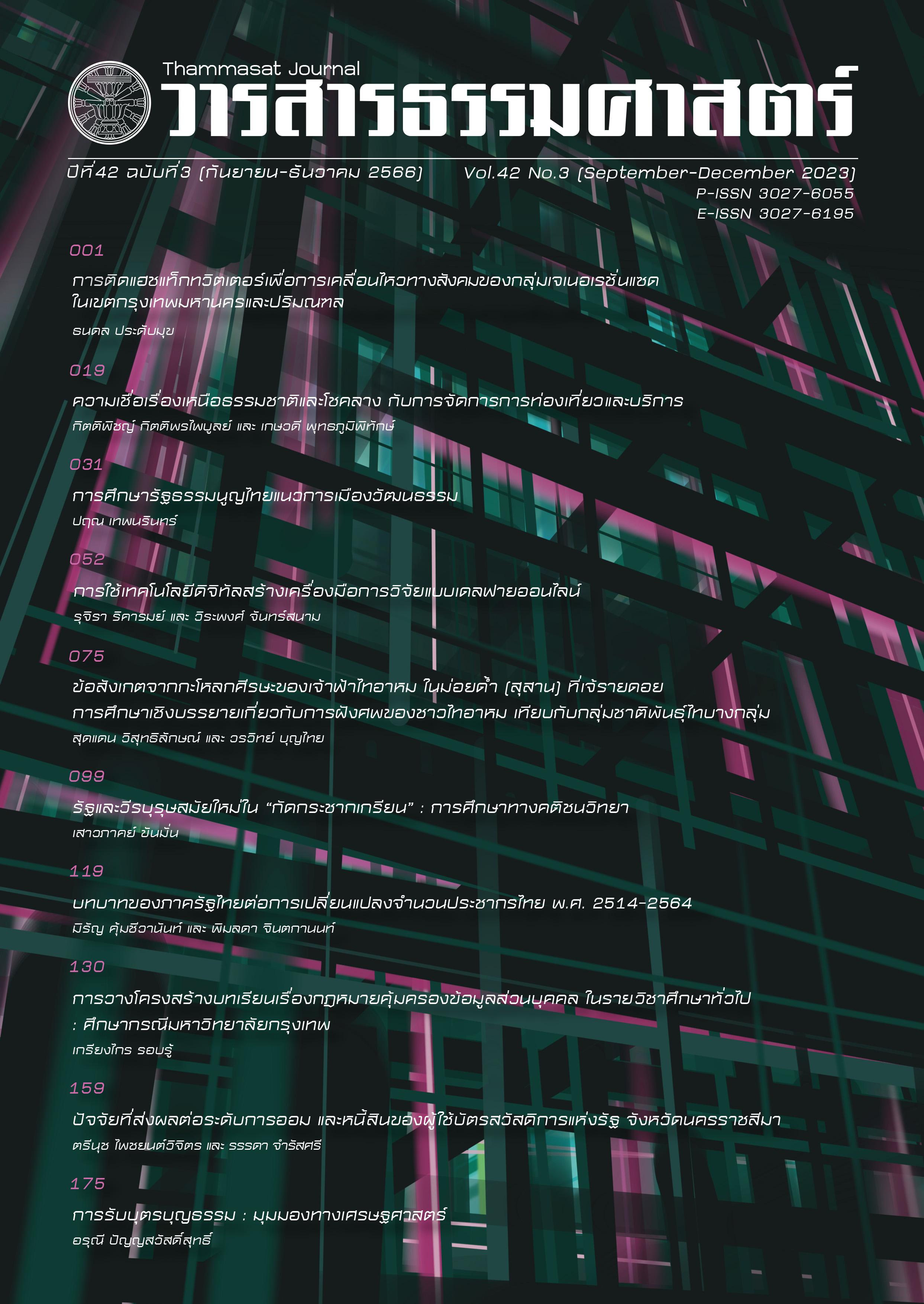Factor Affecting Saving and Debt Levels of the Welfare Card Users in Nakhon Ratchasima Province
Main Article Content
Abstract
This research examines factors affecting savings and debt of welfare card users. We use a survey method with set of questionnaires to collect the data. Our samples are 384 welfare card users in Nakhon Ratchasima province. Data was collected in 2020. We use the Logit Model and Ordered Logit Model to analyze data. The results show that the factors affecting the level of savings are as follows: 1) saving decreases for welfare card users whose ages between 48-57 and those over 57, 2) the occupation of welfare card users, especially agriculturists, increases saving, 3) the measures to reduce the burden of electricity and water bills increase savings, and 4) the measures to help those affected by COVID-19 decrease savings. This could be because the negative effect of COVID-19 is much larger than the positive effect of an additional transfer. Factors that affect the level of debt are 1) education, where welfare card users with bachelor’s degrees and above increases their debt level, 2) an increase in monthly income after receiving welfare card in the group that receives more than 300 baht, decreases debt level 3) the measures to relieve the cost of living through village funds increases debt level, and 4) debt level decreases for people that purchase goods and services in the same amount after receiving the welfare card. Statistical significant at 0.1 level.
Article Details
References
กองทุนการออมแห่งชาติ. (2563). ชวนผู้ถือบัตรสวัสดิการแห่งรัฐ ออมเงินกับ กอช. https://www.
nsf.or.th/index.php/2016-02-09-14-38-50/2016-02-09-14-50-60/1091-2019-01-29-02-36-11
ภัทรานิษฐ์ เหมาะทอง และคณะ. (2563). การกำหนดขนาดตัวอย่างโดยใช้สูตร Yamane. http://sc2.kku.ac.th/stat/statweb/images/Eventpic/60/Seminar/01_9_Yamane.pdf
สรา ชื่นโชคสันต์ และคณะ. (2562). 8 ข้อเท็จจริง ปัญหาการเงินของครัวเรือนไทย. ธนาคารแห่งประเทศไทย.
สุนารี งามทรัพย์. (2562). การศึกษาผลการใช้บัตรสวัสดิการแห่งรัฐของประชาชนในอำเภอนางรองจังหวัดบุรีรัมย์. ภาคนิพนธ์รัฐศาสนศาสตรมหาบัณฑิต, มหาวิทยาลัยราชภัฏนครราชสีมา
สำนักงานสภาพัฒนาการเศรษฐกิจและสังคมแห่งชาติ. (2563ก). ตัวชี้วัดเป้าหมายยุทธศาสตร์การสร้างความเป็นธรรมและลดความเหลื่อมล้ำในสังคม ของแผนพัฒนาฯ ฉบับที่ 12 ปี พ.ศ. 2554-2563 รายปี. http://social.nesdc.go.th/SocialStat/SttReport_Final.aspx?reportid=3803&template=3R1C&yeartype=M&subcatid=50
สำนักงานสถิติแห่งชาติ. (2563). สัมประสิทธิ์ความไม่เสมอภาค (Gini coefficient) ของรายได้ ปี พ.ศ. 2531-2562. http://statbbi.nso.go.th/staticreport/page/sector/th/08.aspx
สำนักงานเลขาธิการนายกรัฐมนตรี. (2561). มาตรการสวัสดิการแห่งรัฐนวัตกรรมเพื่อความยากจน. วารสารสำนักเลขาธิการนายกรัฐมนตรี, ฉบับเดือนเมษายน - มิถุนายน 2561, สำนักโฆษกสำนักเลขาธิการนายกรัฐมนตรี.
Hunt, J. (2017). The Cashless Debit Card evaluation: does it really prove success. Centre for Aboriginal Economic Policy Research, Topical Issue No. 2/2017.
Kirdruanga, P., & Glewweb, G. (2018). The Impact of Universal Health Coverage on Households’ Consumption and Savings in Thailand. Journal of the Asia Pacific Economy, Taylor & Francis Journals, 23(1), 78-98.
Rehman, H.U., Bashir, B., & Faridi, M.Z. (2011). Saving Behavior among Different Income Groups in Pakistan: A Micro Study. International Journal of Humanities and Social Science, 1(10), 268-277.

